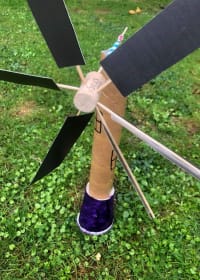
These plans describe how to build two sizes of machine. The diameter of the larger wind-rotor is 8 feet [2.4 m]. The smaller machine has 4' diameter [1.2 m].
98% match
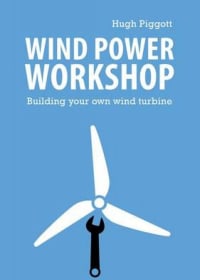
Windpower Workshop is a comprehensive guide to building your own wind turbine, written by Hugh Piggott who has been making windmills for 20 years from scrap parts and advising individuals and companies on small to medium scale wind power turbines.
98% match
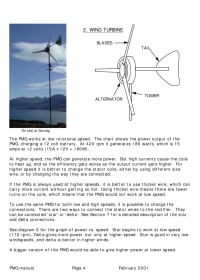
This manual describes how to build a 'permanent magnet generator' (PMG). We can also call it an 'alternator', because it generates alternating current (AC). It will not generate 'mains voltage' or 'utility power' AC. It generates low voltage, 'three phase' AC, and then changes it into 'direct current' (DC) for charging a 12 volt battery.
98% match
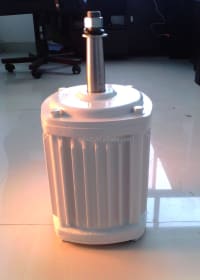
This manual describes how to build a 'permanent magnet generator' (PMG). We can also call it an 'alternator', because it generates alternating current (AC). It will not generate 'mains voltage' or 'utility power' AC. It generates low voltage, 'three phase' AC, and then changes it into 'direct current' (DC) for charging a 12 volt battery.
86% match
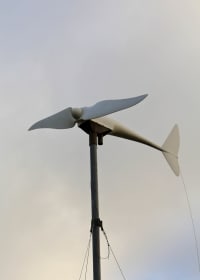
Here, you will find instructions for building a Savonius Rotor for water pumping. The Savonius Rotor, although not as efficient as a windmill of comparable size, lends itself to water pumping for irrigation in underdeveloped areas due to its low initial cost, simplicity of materials and construction and low maintenance cost.
85% match
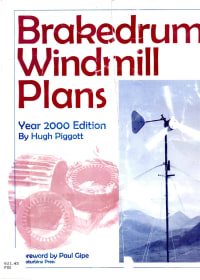
The plans in this booklet are for a wind turbine that really works from someone who lives with and depends on wind energy. The brakedrum windmill is a proven design that Hugh has operated at a remote, windswept headland in northwest Scotland since 1993.
85% match
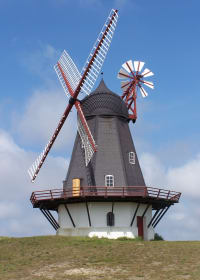
The text, photographs and drawings in this book are extremely precise and accurate and any practical engineer should find no difficulty in building a windpump from the plans and details provided.
85% match
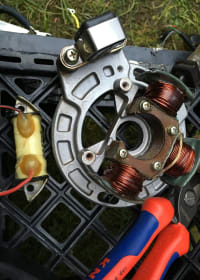
The stator is the very important electrical part of the wind turbine. It contains all the coils of wire which will have voltage induced in them as the magnets pass over them. It's defined as the 'stator' because it is the 'stationary ' (it doesn't turn ) part of the alternator. For this project you're building a 3 phase alternator and the stator will have 9 coils.
85% match
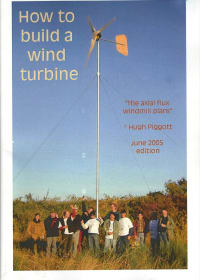
Wind can be an excellent choice for isolated power supply, and such is the nature of the folk who live in such places that many will prefer to 'DIY' wherever possible. This book does an admirable job in filling a gaping hole in the available literature on practical small scale wind engineering. It comes from a disciplined and highly trained devotee who has explored all the angles and learned most of the lessons (many of them the hard way).
85% match
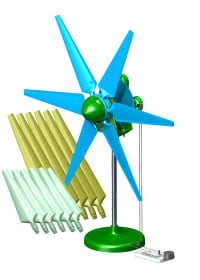
This document will show you how to build PicoTurbine—a fully functioning, electricity-producing scale model of a Savonius wind turbine. It is an easy to build educational kit with Building instructions, Teacher’s guide, and Technical Notes for grade 5 through adult. For hobbyists, science fairs, schools, home schools, youth groups, and experimenters.
85% match
Modules
File Types
Book Pages
File Size
Rating
Minimum
Skill Suitability
Survival Skills
Defensive Skills
Environment Setting
Health and Fitness
Time Available
Finances Available
Wind
In times of crisis or when living off-grid, it's essential to have access to reliable sources of energy. Wind is one such source that can be harnessed through various methods. Whether you're looking to assess your property's wind energy potential or build your own personal turbine, our collection of books has got you covered.
Assessing Wind Energy Potential by Michael Brower is an excellent resource if you want to determine whether wind energy is right for you. It covers everything from site assessment tools and data analysis techniques to environmental impact assessments and permitting requirements.
"How To" guides like How To Make A Stator by Hugh Piggott or Build Your Own Personal Wind Turbine by Phillip Hurley provide step-by-step instructions on building small-scale turbines using readily available materials. For those interested in pumping water using wind power, A Cheap Wind Machine For Pumping Water by John Michael Greer offers practical advice on constructing low-cost pumps.
The category also includes technical resources like Analysis Of A Wind Turbine edited by John Holmes which provides a detailed overview of horizontal axis fast running turbines as well as Brake Drum Permanent Magnet Generator For Windmill plans offered in Brakedrum Windmill Plans book written by Rob Ludlow.